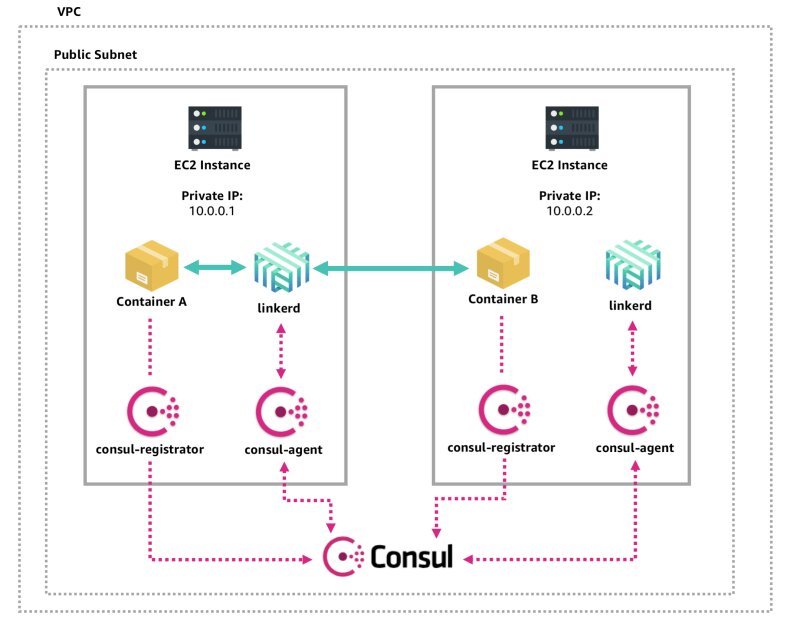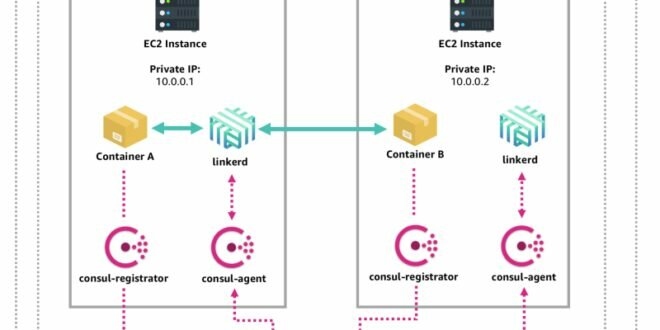
Deploy Docker Container On Aws – Amazon Elastic Container Service (Amazon ECS) is the service you use to run Docker applications on a scalable cluster. In this walkthrough, you’ll learn how to run a Docker-powered sample application on an Amazon ECS cluster behind a load cell, test the sample application, and disable your resources to avoid being charged. This document uses Fargate, which costs ~$0.004 (less than half a US cent) per hour when using a 0.25 vCPU / 0.5 GB configuration.
[**]Accounts created within the last 24 hours cannot access the services required for this document.Deploy Docker Container On Aws

The Amazon ECS Startup Wizard will guide you through creating a cluster and launching a sample web application. In this step, you’ll log in to the Amazon ECS console and start the wizard.
Aws] Deploy Docker Containers On Ecs · Ming’s Site
A To start the Amazon ECS First Run Wizard, select the Start button. (If your design looks different, turn off the NewECS Event Change button at the top left of the console).
A job description is like a blueprint for your application. In this step, you specify the job description so that Amazon ECS knows which Docker image to use for the container, how many containers to use in the job, and the resource allocation for each container.
Now that you have created the service definition, you configure the Amazon ECS service. The service starts and saves a copy of the job description to your team. For example, by running an application service, Amazon ECS automatically resumes any stopped jobs and maintains the number of copies you specify.
B. Ratings: You have the option to use ratings for your Service. Amazon ECS can create an Elastic Load Balancing (ELB) load balancer to distribute traffic across all container instances where your service is running.
How To Automate Docker Deployments In Aws Ecs
The default values for Load Balancer Listener Channel and Load Balancer Listener Protocol are for the sample request. For more information about tenant balancing configuration, see Service Load Balancing.
Your Amazon ECS jobs run on a cluster, which uses Fargate to provide the compute engine so you don’t need to manage servers. In this step, you will configure the cluster.
In the previous steps, you configured your job description (similar to the request plan), the Amazon ECS service (which launches and maintains copies of your job description), and your cluster. In this step, you’ll explore, open, and view the resources you’ve created.

A You have one last chance to review your job description, job description, and package preparation before you begin. Select Create.
Why Use Containers? :: Containers On Aws :: Architecture Patterns For Aws Ecs And Aws Fargate
B You are on the Launch Status page which shows the status of your launch and explains each step of the process. After the launch is complete, select Check Service.
In this step, you will verify that the application is up and running by pointing your browser to the load balancer DNS name.
D In the Details tab, select the two-page icon next to Load Balancer DNS to copy the DNS name to your clipboard.
Paste e into a new browser window, and press Enter to view the application version (in this case, a web page).
Deploy Docker Containers In Aws Lambda In 5 Easy Steps
Throughout this guide, you’ve started three resources: an Amazon ECS cluster, Fargate to run your container, and a load balancer. In this step, you will clear all your resources to avoid unwanted charges.
E When everything is deleted, you will see the removed cluster sample cluster success message in green. You have completed this guide.
Congratulations! You learned how to configure and deploy your Docker-enabled application to Amazon ECS, and how to delete resources that are no longer needed. Amazon ECS is a highly scalable, highly scalable management service that supports Docker containers and allows you to easily run applications on a managed cluster of Amazon EC2 instances.

Feedback helps us improve our knowledge. If you want to share more information about the answer, click the comment button below.
Using Ecs To Deploy A Docker App To Aws
Create a Device Image Learn how to create a device image for use on Amazon ECS. next”
Connect with the community Learn from the community, join us at an innovative event, and meet inspiring community members. next”
Find hands-on tutorials for your needs Get started with step-by-step tutorials to launch your first application. next”
Internet Explorer support ends on 07/31/2022. Supported browsers are Chrome, Firefox, Edge, and Safari. Learn more » Building Games Cloud Operations & Migration Market News Partner Network Smart Business Big Data Business Development Cloud Enterprise Strategy Cloud Financial Management Computer Handling Center Containers Database Desktop & Application Streaming Developer Tools DevOps Front-end Web & Mobile.
Deployment On Aws (with Authentication)
HPC Industries Integration and Automation Internet of Things Machine Learning Media Messaging and Targeting Microsoft Workloads on Network and Content Delivery Open Source Public Sector Quantum Computing Robotics SAP Security Startup Maintenance Training and Certification.
中国版 Édition Française Deutsche Edition
Docker Hub has recently updated its service settings to introduce a threshold scale for snapshotting containers. While these limits do not apply to accounts under the Pro or Team plans, anonymous users are limited to 100 downloads per IP address per 6 hours, and limited free accounts are limited to 200 downloads per 6 hours. In this post, you’ll learn the correct procedure to pull images from private repositories using both Amazon ECS and Amazon EKS with Docker Hub to avoid operational bottlenecks due to newly established limitations and your private containers. Access to images can be controlled. If you’re not already using Docker Hub, you can consider Amazon Elastic Container Registry (Amazon ECR) as a well-established alternative with native integration in your cloud environment.

Amazon Elastic Container Service (Amazon ECS) is a well-defined container service that allows you to specify the container images you want to run as part of your application in a resource called a service description. You can save your Docker Hub username and password as a secret in Secret Manager, and Key Management to record that secret with a unique data key stored by the KMS Customer Master Key (CMK). Service (KMS) can be further integrated. You can then define the secret in your job definition and grant the appropriate permissions to retrieve and publish the secret by creating a role in Identity and Access Management (IAM).
Chapter 11 Docker Containers
The diagram below is a high-level image of the solution included in this post to demonstrate DockerHub using Amazon ECS.
If you want to follow the exact steps in this post, you can download the official Docker build of NGINX, tag the image with your private domain name, and upload it to your Docker Hub account. can. Change it.
Otherwise, feel free to use the Docker image of your choice, but be aware that you may need to make small changes to the commands and settings used in this post.
Start by creating a Customer Master Key (CMK) and Alias in KMS using the CLI. This CMK will be promoted by the secret manager to envelope encryption on a unique data key that will be used to encrypt your private secrets. An alias serves as the display name for your CMK and is easier to remember than a key ID. Aliases can also help simplify your applications. For example, if you use an alias in your code, you can change the base CMK that your code uses by combining the given alias with a different CMK.
How To Deploy Application On Aws Ecr Using Jenkins
The Amazon Resource Name (ARN) of the newly created key should appear as the output of the previous command. Change it.
You will also need CMK’s ARN while creating the trust document in the next step.
At this point you can continue to create a secret in the Secret Manager to securely store your Docker Hub username and password. Change it.

Replace with your CMK alias from the first step. We also recommend naming the secrets in categories to make them easier to manage. Note that the hidden name is prefixed with a in the following command.
Minutes To Deploy A Docker Compose Stack On Aws Ecs Illustrated With Hasura And Postgres ⏰
The ARN of the secret should be shown as the output of the previous command. You will need to check this ARN while creating the trust document in the next step.
First you will need to create a trust document to name the person who can act, which in this case is the ECS role:
Next, create an authorization that allows the ECS function to copy and retrieve the secret created in the secret manager. Change it.
Now you can create ECS task execution using CLI. Note that you are referring to the trust policy document created in the previous step. Change the directory path as needed to find the appropriate file:
Deploy To Aws From Gitlab Ci/cd
To add initial permissions to other service resources required to run Amazon ECS services, associate the configured ECS service with the process.
Deploy docker container to aws, deploy container to aws, deploy docker container, host docker container on aws, aws deploy docker image, aws deploy docker container, deploy docker container in aws, deploy docker container to server, how to deploy docker container, aws deploy container, deploy docker to aws, deploy docker container to aws ec2
 GoInspiration | Best Forex, Stock, Gadget, and Internet Information Apps
GoInspiration | Best Forex, Stock, Gadget, and Internet Information Apps